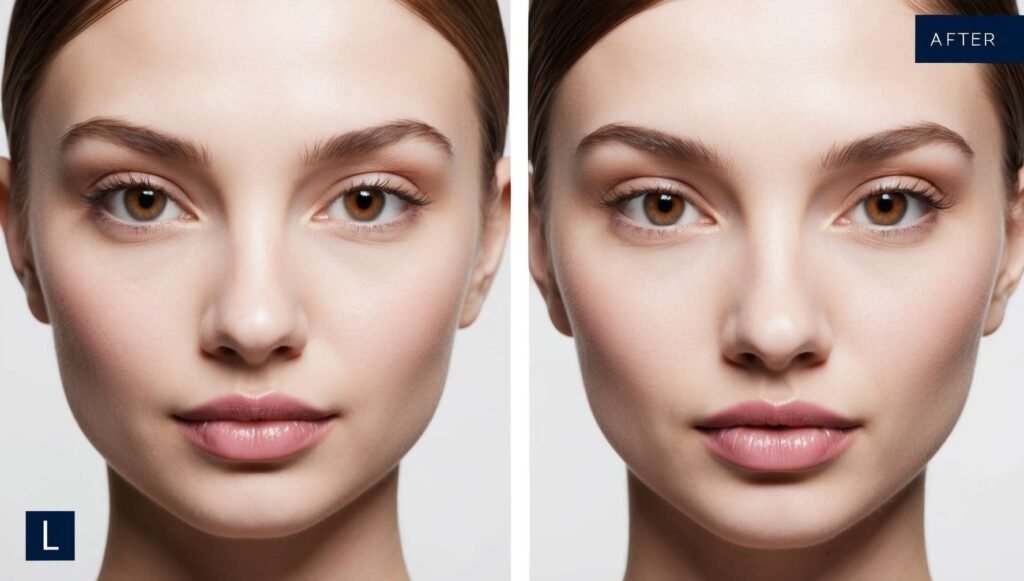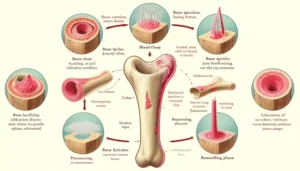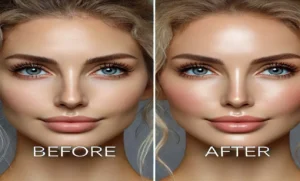Do Lip Fillers Hurt? A Complete Guide to the Experience

When considering enhancing your lips, one of the most common concerns is, “Do lip fillers hurt?” It’s a valid question. After all, the idea of injecting a substance into your lips can sound intimidating. But fear not. In this comprehensive guide, we’ll explore everything you need to know about the pain (or lack thereof), how lip fillers work, and how to minimize discomfort. We’ll also answer frequently asked questions, provide helpful tips, and share insights from professionals in the field. By the end, you’ll feel more confident about deciding whether lip fillers are right for you.
- What Are Lip Fillers?
- The History of Lip Enhancement
- How Do Lip Fillers Work?
- Why Do People Get Lip Fillers?
- The Common Fear: Do Lip Fillers Hurt?
- The Importance of a Skilled Practitioner
- Tips for Selecting the Best Lip Filler Provider
- The Science Behind Lip Fillers
- Potential Risks and Side Effects
- Celebrities and Lip Fillers: Who Has Them?
- FAQs About Lip Fillers
- Conclusion
What Are Lip Fillers?
Lip fillers are a form of dermal filler aimed at improving the look of your lips by increasing their volume, shape, and definition. The most frequently used lip fillers contain hyaluronic acid (HA), a naturally occurring substance in the body that aids in moisture retention and adds fullness to the lips. Well-known brands for lip enhancement include Juvederm, Restylane, and Belotero.
The History of Lip Enhancement
Ancient Practices
Believe it or not, lip enhancement has been around for centuries. Ancient civilizations used various methods to plump their lips, including:
- Applying irritants to cause swelling
- Using natural oils and balms
- Tattooing the lips for a fuller appearance
Modern Developments
With the development of collagen injections in the 1980s, the modern practice of using lip fillers emerged. Since then, advancements in medical technology have led to safer and more effective treatments.
How Do Lip Fillers Work?
Lip fillers are injected into different areas of the lips to increase their size, enhance their shape, or create a more symmetrical appearance. A qualified aesthetic practitioner uses a fine needle to carefully inject the filler, which gives the lips a fuller, smoother appearance. The filler integrates with the natural tissues in your lips to achieve the desired look.
Why Do People Get Lip Fillers?
People opt for lip fillers for a variety of reasons, including:
- Enhancing naturally thin lips
- Restoring volume lost due to aging
- Correcting asymmetrical lips
- Boosting self-confidence and facial aesthetics
Whether it’s for a subtle enhancement or a dramatic transformation, lip fillers offer flexibility in achieving a customized look.
The Common Fear: Do Lip Fillers Hurt?
The fear of pain is one of the top reasons people hesitate to get lip fillers. But how painful is it, really? Let’s break it down.
The Pain Scale: What to Expect
On a scale from 1 to 10 (with 10 being the most painful), most people rate the pain of getting lip fillers between a 2 and a 4. While pain thresholds differ among individuals, the discomfort is generally described as mild.
How Pain Varies by Individual
Pain tolerance is subjective. What feels like a light pinch to one person might feel more intense to another. Factors such as your pain threshold, the skill of your practitioner, and the specific area of injection can all influence the level of discomfort.
What Happens During a Lip Filler Procedure?
Here’s a step-by-step breakdown of the procedure:
- Consultation: Your provider will assess your lips and discuss your goals.
- Preparation: A numbing cream is applied to the lips to minimize discomfort.
- Injection: Using a fine needle, the practitioner injects the filler into the targeted areas.
- Shaping: The practitioner might softly massage the lips to ensure the filler is evenly spread.
- Post-Injection: The procedure is complete, and you’re given aftercare instructions.
Pain Management: Numbing Cream and Other Methods
To minimize discomfort, most practitioners apply a topical anesthetic cream prior to the injections. Some fillers also contain lidocaine, a local anesthetic, to provide extra relief during the procedure. In some cases, an ice pack may be applied to the lips before and after the injections to help numb the area and reduce swelling.
Different Types of Lip Fillers and Their Pain Levels
Different brands of lip fillers, such as Juvederm, Restylane, and Belotero, can have varying pain levels depending on their formulation and how they are injected. Generally, hyaluronic acid fillers are the least painful due to their smoother consistency and the presence of lidocaine in many formulations.
Are There Certain Areas That Hurt More?
Yes, some areas of the lips are more sensitive than others. For example, the Cupid’s bow, which is the center of the upper lip, tends to be more sensitive because of the high concentration of nerves in that area. However, with proper numbing techniques, discomfort can be minimized.
The Importance of a Skilled Practitioner
The expertise of the injector plays a huge role in how painful the procedure feels. A skilled practitioner will have a light touch, know the right techniques, and ensure you’re comfortable throughout the process.
What Happens After the Procedure?
After the procedure, you might experience some mild swelling, bruising, or tenderness around the injection sites. These side effects are typical and generally fade within a few days. You’ll notice the results more clearly as the swelling goes down.
How Long Does Swelling and Bruising Last?
Swelling and bruising typically last between 24 and 48 hours. In some cases, mild swelling can persist for up to a week, but this is rare.
Aftercare Tips to Minimize Discomfort
- Use an ice pack to help minimize swelling.
- Avoid strenuous exercise for 24-48 hours.
- Keep yourself well-hydrated and steer clear of prolonged sun exposure.
- Avoid touching or massaging the treated area unless your provider advises otherwise.
- Avoid alcohol and salty foods, as they can increase swelling.
Tips for Selecting the Best Lip Filler Provider
When selecting a provider, look for someone who is certified, experienced, and has a portfolio of before-and-after photos. Ask about their technique, the types of fillers they use, and how they manage discomfort during and after the procedure.
Qualifications to Look For
When selecting a practitioner for lip fillers, look for:
- Medical qualifications (e.g., dermatologist, plastic surgeon)
- Specific training in injectable treatments
- Experience with lip fillers
- Photos of clients taken before and after lip filler treatment
Questions to Ask
Feel free to ask any questions during your consultation for lip filling. Some important ones include:
- Which type of filler would you suggest for my needs?
- How many treatments will I need?
- What possible risks and side effects should I be aware of?
- How long will the results last?
What Should You Expect From Your First Lip Filler Appointment?
Your first appointment may take longer than subsequent ones, as it includes a consultation where you’ll discuss your goals and concerns. The actual procedure usually takes about 15-30 minutes, and you’ll leave with aftercare instructions to ensure the best results.
The Science Behind Lip Fillers
How Hyaluronic Acid Works
Hyaluronic acid is a common substance that is naturally present in our bodies. When injected into the lips, it:
- Attracts and retains moisture
- Adds volume and structure
- Stimulates collagen production
Longevity of Results
The effects of lip fillers typically last 6-12 months, depending on factors like:
- The type of filler used
- Your metabolism
- Your lifestyle habits
Potential Risks and Side Effects
While lip fillers are generally safe, there are potential side effects to be aware of, including:
- Swelling and bruising
- Lumps or unevenness
- Infection (rare)
- Allergic reaction (very rare)
Selecting a trustworthy practitioner for lip filling lowers the likelihood of complications.
Do Pain Levels Change with Subsequent Treatments?
For many people, subsequent lip filler treatments are less painful than the first. This is likely due to familiarity with the process and better awareness of what to expect.
Are There Alternatives to Lip Fillers That Hurt Less?
If you’re concerned about pain, there are alternatives to lip fillers, such as lip plumping glosses or serums. However, these options provide temporary results and won’t give you the same dramatic or lasting effect as fillers.
Celebrities and Lip Fillers: Who Has Them?
Many celebrities have turned to lip fillers for enhancement, including Kylie Jenner, Bella Thorne, and Lisa Rinna. While some are more open about their procedures than others, lip fillers have become a popular choice among those in the public eye.
FAQs About Lip Fillers
Do lip fillers hurt during the injection?
Most people experience only mild discomfort, thanks to numbing creams and the use of fine needles.
How long do lip fillers last?
Lip fillers generally last between 6-12 months, depending on the type of filler used.
Can I feel the filler in my lips?
Initially, you may feel a slight firmness, but this will soften over time as the filler integrates with your tissue.
How much do lip fillers cost?
The cost varies depending on location and the type of filler, but the average price is between $500 and $2,000 per session.
Are lip fillers safe?
Yes, when performed by a qualified professional, lip fillers are considered safe with minimal risks.
Can I wear makeup after getting lip fillers?
It’s recommended to wait at least 24 hours before applying makeup to avoid infection or irritation.
What steps should I take to get ready for a lip filler appointment?
Refrain from consuming alcohol, blood-thinning medications, and supplements for at least a week prior to your appointment.
Will my lips look swollen immediately after the procedure?
Yes, some swelling is normal right after the procedure, but it typically subsides within a day or two.
Can lip fillers be removed if I don’t like the results?
If necessary, hyaluronic acid fillers can be broken down using an enzyme known as hyaluronidase.
How often should I get lip fillers?
Most people choose to get touch-ups every 6 to 12 months to keep their preferred look.
Conclusion
While the idea of getting lip fillers might seem intimidating, the pain is generally minimal and well-managed with numbing agents and a skilled practitioner. The results can be transformative, boosting both your appearance and confidence. Always consult with a certified and experienced provider to ensure a safe and comfortable experience.






